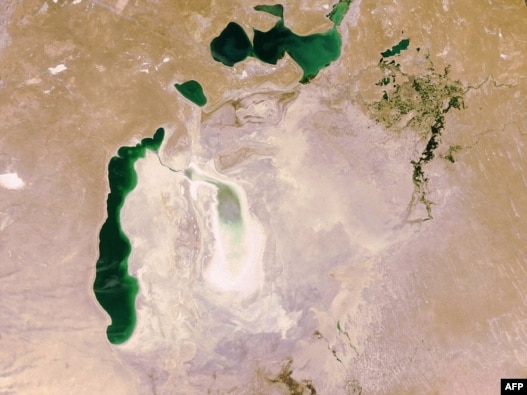I have an odd fascination with geography — particularly weird geography. One of my favorite things to do is look at satellite maps of where humans drastically change the landscape. Sure, you can see the impacts on the ground, but it’s more shocking when you look at a Google map picture.

The Aral Sea, in Central Asia, is a perfect example. In 1960, it was the fourth largest lake in the world. Now it’s reduced to 10 percent of its original size thanks to poorly planned irrigation by the Soviets. The North Aral Sea might have a chance of survival with the addition of dams. But the South Aral Sea is basically going to become a mud flat.
Occasionally, I check up on the Aral Sea like checking up on a sick goldfish that is going to die. The latest news are not pleasant. On Sunday, UN Secretary-General Ban Ki-moon, who just toured the region, said the depletion of the Aral Sea is one of the planet’s most “shocking disasters.”
If you are wondering what life is like for people living by the Aral Sea, there here is a documentary that is not too depressing:
So why do I care about the Aral Sea and all those satellite pictures? Perhaps I’m a hippie tree hugger. Or maybe because I am legitimately worried about the condition of the earth. Human beings can, and do, cause enormous changes to the landscape. If sea levels indeed rise as predicted due to climate change, I will be looking at a satellite picture of Florida that shows my house underwater. I — and also you — would never be able to take a vacation in Key West. I — and also you — would never be able to party in Miami.








